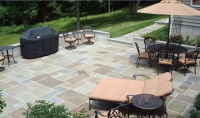Wooden/charcoal pipe?
What's the diameter of the pipe and did you find any other pieces? Possibly sub surface drainage for a particularly wet part of the fields, or a very small drainage channel?
It's an oval--roughly 4"/5" x 3" at it's widest points. One end looks like it might have been cut.
The other definitely disintegrated, and there were lots of fragments of broken charcoal--maybe another few inches of pipe.
Then it went--if it went--under a porch (no foundation) and I didn't pursue it. (Another 8' and it gets to the house foundation so nothing more there.)
water pipe used for drainage from gutters. I don’t know what they are made of, but they become clogged with roots and no longer work
The original water pipes from Croton Reservoir to N.Y.C. were oak.
Remnants were dug up 50 years ago as part of a building construction project and would have been serviceable if they were still being used.
you sure it’s not this? A few years in the ground and it looks very much like your picture
I wish I knew, but it is cool. Maybe try contacting the Williamsburg foundation for some ideas to what is could be?
You dug all that out? (Modestly described as “turned up.”) Huzzah!
peteglider said:
you sure it’s not this? A few years in the ground and it looks very much like your picture
https://en.m.wikipedia.org/wiki/Orangeburg_pipe
Interesting--I will take a closer look; it's possible. Conduit might make sense from the original house--garage has electric--it's pvc now, but that's newer.
Wouldn't be in the right place, but could have been tossed--old clay pipe etc. was dumped under porch when we got here.
@bella, what's the Williamsburg Foundation?
Are you sure it isn't your old sanitary sewer pipe? It would be close to the correct diameter. And it does look an old sanitary pipe after years of build up. Did you make the cuts on top? They look like cuts from a cut off/demolition saw, and that's what they would have used to cut the old pipe out.
I know I am reaching here, but is there anyway the pipe might be cast iron and not wooden? Although, I believe they used wooden pipes for the trunk lines back in the day. I think NY and Boston may still have some still in use.
EricBurbank said:
Are you sure it isn't your old sanitary sewer pipe? It would be close to the correct diameter. And it does look an old sanitary pipe after years of build up. Did you make the cuts on top? They look like cuts from a cut off/demolition saw, and that's what they would have used to cut the old pipe out.
I know I am reaching here, but is there anyway the pipe might be cast iron and not wooden? Although, I believe they used wooden pipes for the trunk lines back in the day. I think NY and Boston may still have some still in use.
This^^^^^
Looks like over a hundred years of rust.
it’s orangeburg drain pipe. Layered wood fiber, bitumen and tar paper. It was used mainly for rain leader piping as a less expensive and labor intensive alternative to extra heavy cast iron bell and spigot pipe.
According to local historian, Lynn Gale, whose ancestors have lived in our area since the 1840's, what you found is definitely a water pipe. The charcoal on the inside of the pipe was used to make the pipe water tight.
Interesting. When it stops raining I will take a closer look, see if it does or doesn't have layers and it it would be corroded iron.
I am pretty sure I see wood grain under/through the dirt on the outside.
jfburch said:
peteglider said:Interesting--I will take a closer look; it's possible. Conduit might make sense from the original house--garage has electric--it's pvc now, but that's newer.
you sure it’s not this? A few years in the ground and it looks very much like your picture
https://en.m.wikipedia.org/wiki/Orangeburg_pipe
Wouldn't be in the right place, but could have been tossed--old clay pipe etc. was dumped under porch when we got here.
@bella, what's the Williamsburg Foundation?
The Colonial Williamsburg Foundation. https://research.history.org/
I would think that this would be something that they would have experience with.
davecataneo said:
it’s orangeburg drain pipe. Layered wood fiber, bitumen and tar paper. It was used mainly for rain leader piping as a less expensive and labor intensive alternative to extra heavy cast iron bell and spigot pipe.
+10
Ok. Cleaned it up a bit, and looked at it some more. (Along with pictures of old pipe online.)
It is definitely wood. It sounds like wood when tapped. You can see the grain. I poked at the end to see if layers separated, but it just chipped. And trying to score it through just left marks--and it was hard. Finally I scraped and got something which looks like pencil shavings--which again makes me think it's charred.
In the pictures I saw (next post) most old wood was not black. But some was--and fungus and rot will do it, as can iron. Maybe especially if it was disturbed at some point. (Heck, maybe it was tossed on a fire at some point.)
Some pictures of blackened pipes.
Newark Post article--piece at Newark History Museum
Not very dark, but it's there.
And these look more like mine.
Sponsored Business
Promote your business here - Businesses get highlighted throughout the site and you can add a deal.





































Doing some work in the yard and I turned up about a foot of what seems to be a wooden pipe, charcoaled--esp on the inside. The original house had clay drainpipes to the curb--and it was built way after any kind of wood pipe usage.
Before the house went up, this was part of one of the Ball farms. A creek nearby, but not close enough for this.
Any ideas? Anyone seen something like this before?